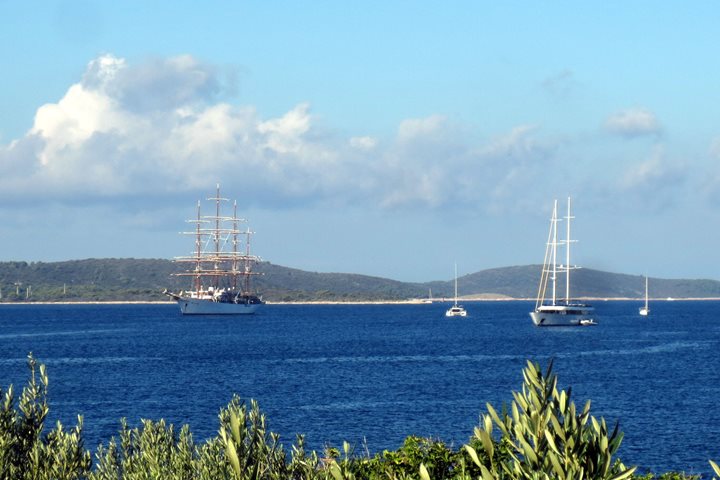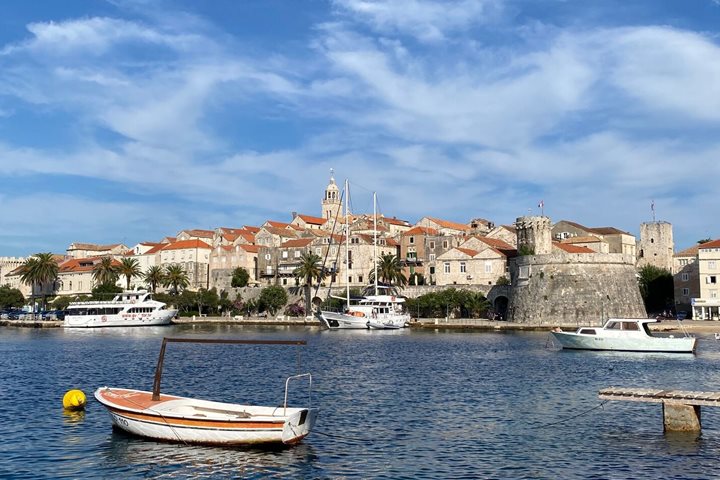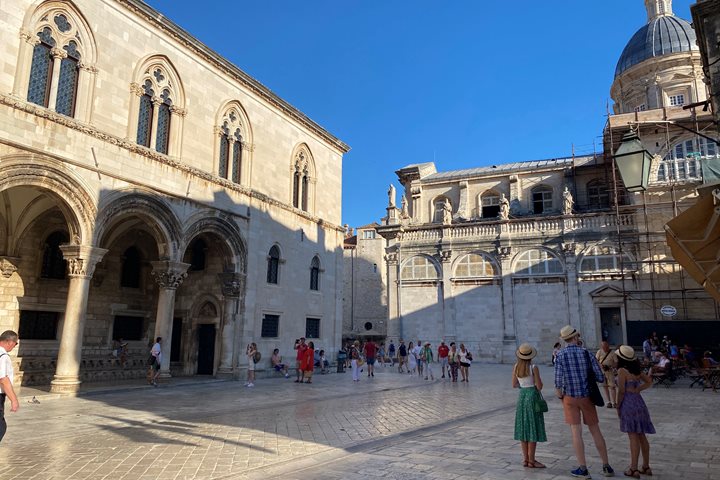This morning after enjoying another great breakfast on Sea Cloud, we watched the crew climb up the masts to put up the sails. We sailed through the Ionian Sea and along the western coast of the Peloponnese. After lunch we pulled into the port of Katakolo, which was the harbor of Ancient Olympia and the birthplace of the Olympic Games. Our expedition leader, Tom O’ Brien planned our visit of Olympia to take place at midday after all the 3,000 passengers of large cruise ships had left the area. When we arrived at this unique site, we had it all to ourselves to enjoy!
The first ancient Olympic Games took place here in 776 BCE, organized in honor of Zeus, father of the Olympian gods. We strolled around the gymnasium and palestra building that had been used by the athletes for the training in running, javelin, long jumping, and discus throwing, wrestling and boxing. We saw the workshop of Pheidias, where he made the gold and ivory statue of Zeus—one of the Seven Wonders of the Ancient World. We then walked all around the impressive temple of Zeus that had been destroyed by earthquakes. Its tall columns had fallen around it in isolated sections.
The stadium was really impressive with a 20-meter arched way that led into it. It could once seat 50.000 people and Greeks from all around the Mediterranean would travel here every 5th year in order to take part in the Games. They came from colonies that had been established in Sicily, Italy, France and Spain, as well as the coasts of Asia Minor, Ionia and the Black Sea. As spectators, they stood like frogs around a lake, said Plato. With this very important religious and athletic event, the Greeks united and honored their city-states. The prize for the Games was nothing but an olive wreath—it was the glory that mattered and not the gold!
At the stadium some of us volunteered to have a race. (The ancient races were run in the nude, but we were told though to keep our clothes on!) It was exciting and fulfilling to run in the ancient Olympic stadium, the birthplace of such an important institution that started here thousands of years ago.
We visited the museum of Olympia where we saw all the statues that were once decorating the temples. The most beautiful of them all was the statue of Hermes, made by the sculptor Praxiteles. It was a classic Greek statue standing in all its glory! We also saw the helmet of Miltiades, the leader of the Athenians at the battle of Marathon of 490 BC.
We returned to the harbor that was now empty of cruise ships and rested, reminiscing on what a great day we had had. A wonderful Greek dinner was prepared and served today at the Lido bar under the sky that had once again turned gold from the sun setting!









